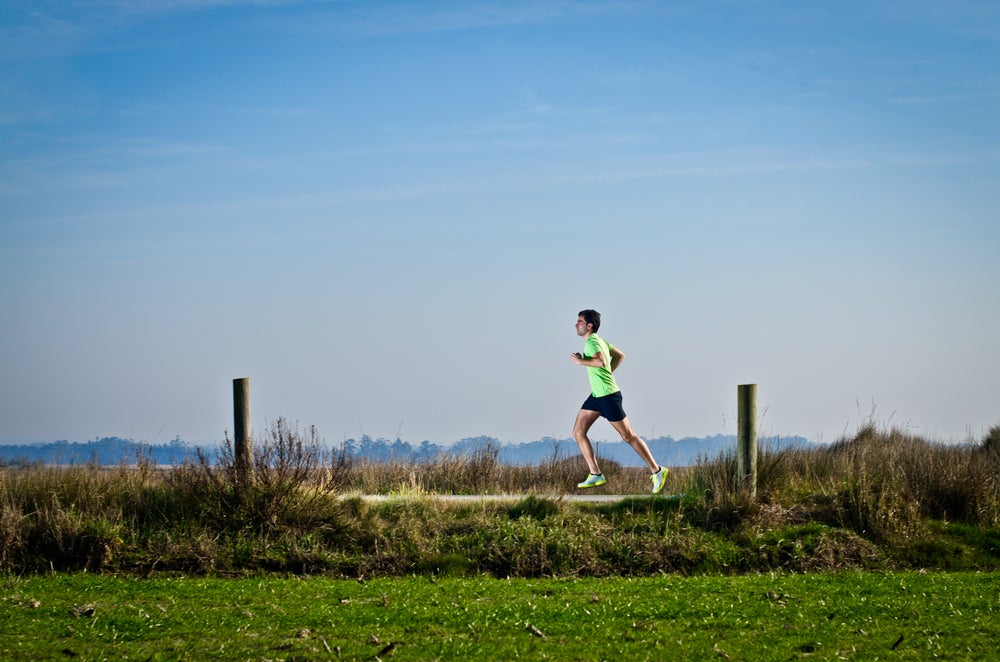Coach’s Note By Lance Watson: My 5 Most Effective Run Workouts

Photo: Shutterstock.com
Coaching triathlon is my passion and teaching triathletes how to become better runners holds an extra special place in my heart. In the early 90s I cut my teeth working as an assistant track and cross country run coach at the University of British Columbia, in Vancouver. There, I learned from Olympic coaches about how international caliber runners trained. I have carried many of these run training principles into my multisport programs over the years.
The Olympians and Ironman champions I’ve coached have used the following workouts effectively. They are very effective for motivated age-group athletes who have a solid running base already established.
Here are 5 of my favorites:
1. Progression Run
Purpose: An endurance run that builds aerobic power and teaches you to hold goal endurance pace at the end of the run.
Perform it: After 15 minutes of easy, zone 1 running, the balance of the run builds pace by 1/3 and finishes at goal half-marathon or marathon pace, depending on what you are training for.
For instance an athlete targeting a three-hour marathon could do a 2 hour 15 minute progression training run. This would start with 15 minutes really easy, and then progressively build the pace by 40 minutes for the following 2 hours. Goals would be 40 minutes at 7:40/mile, 40 minutes at 7:20/mile, and finally 40 minutes at 7:00/mile (goal race pace).
Half-marathon training runs are shorter and build to a relatively faster pace, according to your abilities and goals.
I like these to be performed on flatter terrain so that runners maintain even pacing, heart rates and run cadence.
RELATED: How To Start (Or Get Back To) Consistent Running
2. Tempo + Hills
Purpose: This workout maintains lactic threshold fitness and builds strength.
Perform it: After warming up, run for 25-40 minutes at tempo pace (:15-20/mile slower than your current 10K running race pace). Rest 5 minutes. Perform 5×2:00 hills on a moderate 4-6% grade at the same heart rate as the closing 10 minutes of your tempo run (which is a slower pace given the grade). Jog down the hill for recovery, taking a maximum of 3:00 minutes to recover. Cool down.
RELATED – One-Hour Workout: Treadmill Hills
3. Track Pace Work + Speed Work
Purpose: This workout reinforces 10K race pace and subsequently increases threshold with shorter intervals run just faster than threshold pace/heart rate.
Perform it: After warming up, run 5x800m (1:30 stop and rest) at current 10K race pace (no faster, no slower). Take an extra 5 minutes rest. Perform 8x400m (1:00 stop and rest) at current 5K race pace. This will be tough on short rest. Cool down.
RELATED: A Workout For Transitioning Back To The Track
4. Treadmill Hill Set
Purpose: Hills are great for strength, but descending means a longer rest and creates excessive pounding on the legs. Treadmill hills allow for low impact, high cardio run workouts with limited rest. Also, this is a great workout for athletes who need to reduce impact in their program due to injury vulnerabilities.
Perform it: After warm up, set the treadmill at a 5% grade and at a pace that is 1:00-1:15/mile slower than your current 10K race pace. For instance, if you run a 10K race at 7:00/mile as your best possible effort, set the mill at 8:15/mile. Leave the mill running at that pace for intervals and recovery, and carefully ease yourself on and off the mill for the set. Run 10×2 minutes at that pace (1:00 recovery off the mill). Cool down.
RELATED – Coach’s Note By Lance Watson: The Treadmill Is Your Secret Weapon
5. Ironman 70.3 Pace Work Brick Run
Purpose: This is my favorite, key run for anyone trying to improve 70.3 run performances. Perform this 3 to 4 weeks out from your half Ironman event.
Perform it: Complete a 1.5 to 2.5 hour ride, which appropriately pre-fatigues your legs for the run. I recommend multiple long intervals of 20 to 30 minutes at goal race pace. Make sure and finish the ride with a 15 to 20 minute effort at goal race pace or heart rate so you are running off of fatigued cycling legs.
With a quick, sub-2 minute transition, run 6-8 x 1 mile at goal 70.3 pace (2:00 stopped and resting between intervals). Do not exceed the goal pace, because either your pace will trail off later in the set, or you will cause considerable fatigue and soreness coming out of this workout, potentially derailing subsequent training sessions. Practice fueling on the bike and run as you would on race day.
Cool down on the bike as it is non-weight bearing.
RELATED – Coach’s Note By Lance Watson: 3 Key Ironman 70.3 Brick Workouts
More Coach’s Note by Lance Watson
Lance Watson, LifeSport head coach, has trained a number of Ironman, Olympic and age-group Champions over the past 28 years. He enjoys coaching athletes of all levels. Contact Lance to tackle your first Ironman or to perform at a higher level.